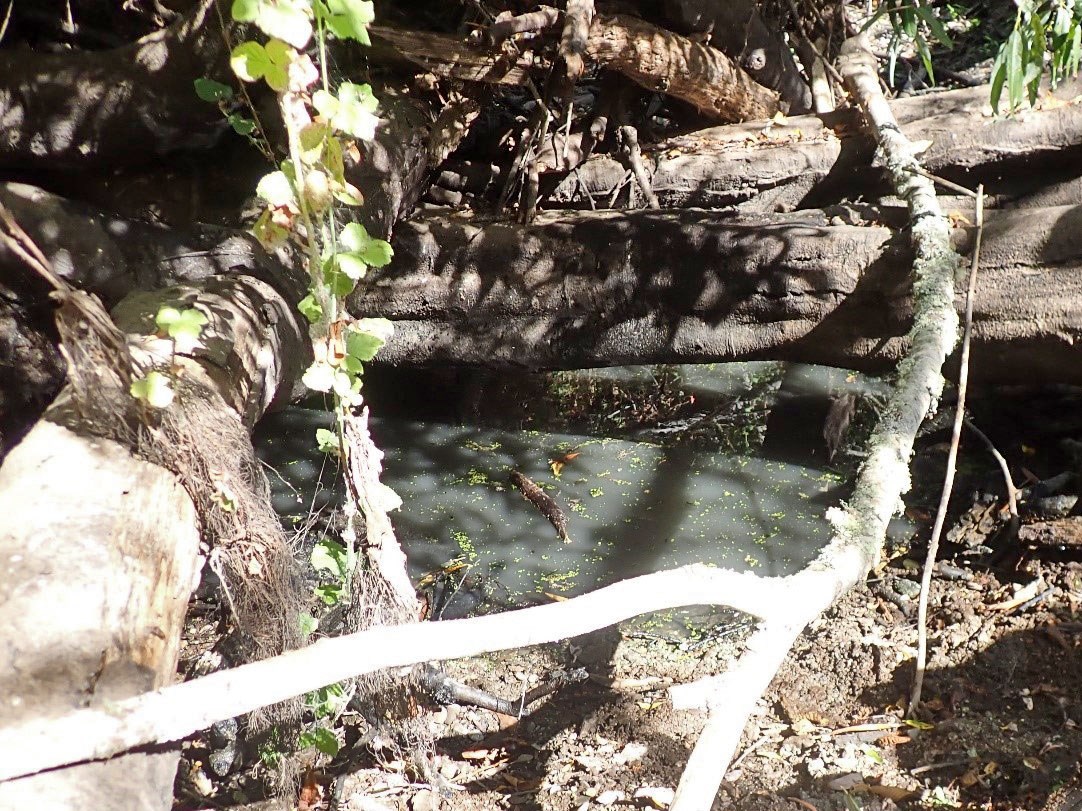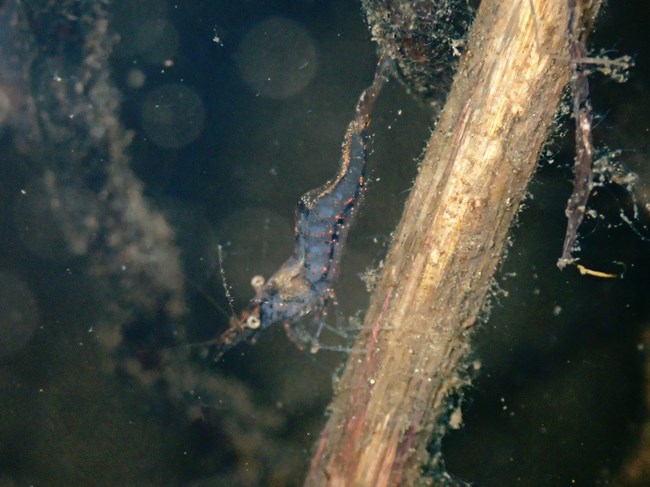Last updated: April 5, 2024
Article
Looking Out for the Little Guy: Coho and Steelhead Monitoring Crew Helps a Tiny Crustacean Threatened by Drought

NPS / Michael Reighmuth
By Michael Reichmuth, Fishery Biologist
October 2021 - It's totally normal for the lower section of Olema Creek in Point Reyes National Seashore to turn into large, isolated pools of water in the summer. The pools persist throughout the dry season, providing refuge for aquatic life. What isn't normal is fewer, quickly shrinking pools. But this September, that's what our San Francisco Bay Area Network Coho and Steelhead Monitoring Crew found as we evaluated the creek. We also discovered that some of the shrinking pools contained high densities of the park's smallest aquatic species of concern: the California freshwater shrimp.

NPS / Darren Fong
What the heck are California freshwater shrimp? Well, they're distinguished from other shrimp by a feature on their second chelae (hinged pincher like claw) that acts as a wrist, and their range is very limited. They're only found in a handful of creeks in Sonoma, Napa, and Marin Counties. They reach a max size of only 2.5 inches, like to feed on decaying material in the water column, and can range in color from nearly translucent to dark brown or purple. Females can change color rapidly to blend in with their surroundings.
These crustaceans can handle poor water quality and a range of temperatures. In general, they can thrive in stagnant pools of water where coho and steelhead would struggle. Still, as we tracked the shrinking pools, we realized the trapped shrimp might need help. We reviewed the weather forecast and the rate of drying in the area and determined that, indeed, the shrimp would need to be rescued if they were to survive.

NPS / Michael Reichmuth
So, using butterfly nets and a pool skimmer, we got to work. Our crew rescued over 250 California freshwater shrimp from three isolated pools over a two-day period and moved them to a large pool upstream. We measured water quality at all the pools to ensure water quality parameters were within the tolerable range for the species. In addition to the rescued shrimp, we were surprised to capture three coho. They were skinny and their condition did not look good. But hopefully our moving them to the larger pool will give them a chance at survival through the remaining dry season.
The drought may not have been all bad for California freshwater shrimp. While conducting our summer juvenile coho and steelhead monitoring in Olema Creek, some shrimp caught us off guard. They were a half mile upstream of the previously known extent for the species! With the low winter and spring flows last winter, it's possible the shrimp were able to migrate further upstream and find new suitable habitat. It will be interesting to see if this upstream range expansion continues in years to come.
For more information
-
Pacific Coast Science & Learning Center California Freshwater Shrimp webpage
- San Francisco Bay Area Network Salmonid Monitoring webpage
- Contact Fishery Biologist Michael Reichmuth
